Reviewed by Rochelle Marsden
(Editor’s note: See book photos and stats at end of article)
Alicia Lees is from Auckland, New Zealand and when at homeopathic college she was taught to create Mind Maps (a graphical way to represent ideas and concepts). These 4 volumes are a mammoth work and are updated when needed. I had to decide how to review them and decided to do them together. The first 3 take us through the Kingdoms and the 4th is the first of more to come, butterflies and flying insects being hinted at.The first 3 are definitely a set, called a Trilogy, representing the 3 Kingdoms we know and love.
The first volume – The Animal Kingdom, had its First Edition in 2010 and the 10th revised edition was produced in December 2016. The second volume, The Mineral Kingdom and the third volume of this trilogy, The Plant Kingdom were also first published in 2010, and in January 2016 had their 8th revised editions. The 4th Volume of this series had its first Edition in 2013 and its 3rd revised edition in 2016.
In the Forward of the first volume Alicia tells us that the mind maps were originally meant for her own use as they were a required assignment at college. She stresses that mind maps are not meant to replace materia medica. They are a portrayal of how she personally sees how one thing leads to another. The Fungi, Nosodes and a list of Sarcodes are included in this Animal volume, although the Fungi at least belong to a completely separate kingdom; however, they are included in The Animals as being the most logical Family to place them in at this time.
All the books tell you in the Forward how to use a mind map. “The way to read a mind map is to start at the top and work downwards…The idea is that the picture unfolds as you move towards the bottom, one symptom arising out of another.” She emphasises that they are “a portrayal as I see it of how they (rubrics) fit together to form the picture”
There is then a table of contents of all the remedies covered in each book. In the Animals book there are the Latin names of the animals sorted by Family, the first being Arachnida. It includes many Lac remedies and lots of remedies I have never heard of, e.g. Ailuropoda – Giant panda fur. In the Sea group I found Aqua marina – Sea water and wondered what it was doing in an Animal remedies book!! As I said previously the Fungi Kingdom and 10 nosodes can also be found in the book.
In the Minerals book there are the Latin names of the Minerals but I am not sure what Hekla Lava is doing in the Actinides section unless this section was meant to finish at Plutonium Nitricum, and we then have a miscellaneous section with Hecla Lava and Natrum glutamicum (MSG). The last section contains 22 Aquae (water) remedies in detail and I have to say I have never seen such a comprehensive list.
In the Plants book there are the Latin names of the plants and these are grouped mostly according to Family.
The Birds book is laid out according to the taxonomic hierarchy of the Class Aves. The birds are grouped according to their Orders, alphabetically. I really was not aware that there were so many birds in existence let alone that so many have been proved, be it with full triturations or dream provings or in the case of Falco tinnunculus, keynotes from a case study. I counted 89 separate birds in this mammoth work and each order includes a differential chart.
All the books are richly illustrated with photos, which adds to the attraction of these volumes as they bring everything to life. Alongside most of the photos is information, fully referenced, pertaining to the subject. Let’s look at each book in a bit more detail.
The Animal Kingdom – This starts off with a mind map of the themes of Family, Duality and Extremes down the centre, with lines extending from there to the main rubrics. Following the lines down and across, it makes perfect sense and is a great aid to the memory.On the same page is information about the Animal Kingdom and a whole list of similes starting with “Sky as a fox” and ending with “Make a monkey out of him”. Starting on the next page with the Arachnida, the Spiders, there is a mind map of the main rubrics so no one can be in any doubt if they are looking at a Spider case or not. Near the bottom of the page is information on Greek Mythology about the goddess Arachne and then more information about spiders.
Next comes the first remedy Androctonos Amoreuxi Hebraeus– the Yellow Scorpion. Down the centre of the Mind map you have “Separated from the World, Detachment, Lack of Control and Overconfident . From these themes just follow the lines to the rubrics . It is Materia Medica in brief and enough to get the main ideas of the animal.
Below the Mind map yet again are interesting facts, and maybe fiction, about the scorpion gathered from various places.At the end of the section on Arachnida (and in fact all the Animal families/Fungi and Nosodes) is a differential chart comparing all the remedies in that Family for the Mentals, Senses, Delusions, Food, Temperature, Generals, Affinities and Sleep/Dreams except for the chart of the birds, which uses different headings.
Some remedies are more comprehensive than others and some, e.g. Lac Cameli Dromedari – camel’s milk, make reference to the prover, in this case Nadia Bakir.
Looking at the Nosodes section it starts with a huge list – which takes up 8 pages of Nosodes, Sarcodes and Microorganisms with a separate page for the Cancer nosodes and Bowel nosodes. I can’t think of anywhere else where all this information can be found in one place. There are detailed mind maps here of 10 remedies including Carcinosin, Foliculinum and Hahnemann’s favourites, Psorinum, Syphilinum, Medorrinum and Tuberculinum. At the end of the book is an Index and Bibliography.
The Mineral Kingdom– This Volume we are told is built round Scholten’s group analysis. It starts with the Acids and Halogens and then goes to the Series of the Periodic Table. In the Acid section is a differential chart of Ammonium salts. In the Carbon series I found a remedy I had never heard of, Carbo fullerenum (Buckyballs), which was proved by Peter Fraser and Misha Norland in 2002!! They are little carbon spheres found throughout the Milky Way. I think I need to find that proving and see just how the remedy was obtained! It has themes which include Am I strong enough to tackle the world?
The Silica series has a differential chart of Magnesium salts and Natrum salts. The Ferrum series has separate differential charts for Kali, Calcarea and Arsenicum salts and the Gold series has Mercurius and Aurum differentials.
Most of the charts compare the Essence, Mentals, Delusions, Fears, Generals and Physicals but some are slightly different. Sadly, I see only a Mind map of the Lanthanide series in general, rather than individual remedies which I often use, but there is a lot more on the Actinide (Uranium) Series. To complete the book are the 22 Aquae remedy mind maps with a list of 106 homeopathic aqua remedies from around the world. This volume has an index, bibliography and a colourful Periodic Table at the back.
The Plant Kingdom – Here the remedies are arranged in Families in alphabetical order. Many of the families have differential charts at the end as described above for the Animal volume. The chart for the Compositae family spans 5 pages and 17 remedies, some of which do not actually have mind maps for them like Bellis P. At the beginning of each Family group there is a comprehensive discussion of that group. Each plant has a photo attached to its mind map. I note that the mind map of Morphinum as a by-product of the Papaver poppy is included, as is Opium.
There is a separate Tree section that discusses the Conifer family and tree products as well as the mind maps of 16 trees. Looking at the Leguminosae there is a list of 69 plants and products down the side of the general page of this family. There are also other similar lists, e.g. Compositae. At the back of the book is a useful alphabetical Index and a Bibliography. Yet again this is an extremely comprehensive work, and I haven’t seen anything like it before.
Class Aves – Birds – This is really new information because as we are told, only a few substances from birds were proven before 1975, e.g. Oscillococcinum in 1918. The taxomomy of Birds is explained in a comprehensive introduction. Next is a mind map for Birds in general which has the themes “Freedom” and the polarity “Restriction”, with the rubrics extending from these 2 words. The Generals and Affinities are also given. The mind maps of the individual birds are laid out in alphabetical Orders with the first one the Acciptriformes, e.g.hawks, kites, eagles and harriers, and finishing with the Order –Trogoniformes, the Trogons. No, I have never heard of this order either but from the photo they have turquoise feathers and a red breast!!
There is a last mind map and that is of the Phoenix, but unfortunately there is no proving information! (An upcoming edition of this book will include a proving of The Phoenix!) All the information comes from ancient texts including ‘The Annals’ by Tacitus 109A.D. and‘Jewish Fairy Tales and legends’by Aunt Naomi (1919). For many of the orders there is a generalised mind map of that order followed by the individual birds. With some orders, e.g. all the Birds of Prey, there is a differential chart.The charts in this books differentiate according to Freedom, Restriction, Relationships, Delusions, Music, Light, Affinities, Food and Spiritual rubrics/symptoms.
Two mind maps are given for the Bald Eagle – one from the proving by Jeremy Sherr in 1997, although it says Shore in the Contents (this error has now been amended) and the other by Hans Ebere and Friedrich Ritzer and written up in Spectrum 01/2011. They are both bloods – the first from an eagle kept captive and the second from a wild one which was injured.
As well as actual bird remedies, there are mind maps for products associated with birds.e.g. Lecithinum, Ova Testae (burnt eggshells), Ovigallinae albumen (white of the egg) andvarious feathers and eggs.
With the mind maps and photos there are lots of other interesting information on each page. Some of this is about the bird in question or Dreams and some birds have the Generalities and Physicals included. At the back of the book there are the alphabetical Index and Bibliography.
Overall I can fully recommend all of these books. The first 3 – the triology, as it is called, is an extremely useful resource for all those homeopaths who require comprehensive information in a shortened form.This is amazing information and saves us much time in reading Materia Medica and trying to extract this data for ourselves. The volumes can of course be bought separately.
I have personally used these volumes in my clinic when going through a remedy with a patient prior to giving it to them. One patient was laughing – seeing herself in what was written on the page. I work like this, as I feel it starts the healing off when the patient feels confident that the correct remedy has been chosen. I always state the old adage that you don’t have to have everything stated in the remedy but most of what you do have should be in the remedy.
Although these books will appeal to all homeopaths, the younger ones who have been taught mind mapping from an early age, will find it a familiar way of working and remembering a remedy. For us older homeopaths this is something new and exciting that’s easy to get the hang of. It is a set of books that is essential to keep in a prominent position on the clinic table to dip into when needed. Yes, these are dip into books as the need arises. They are not something to read from cover to cover. I think they are an amazing resource for homeopaths. It is a life’s work that Alicia has presented us with and there is the promise of more to come.I look forward to obtaining future volumes.
Homeopathic Mind Maps – Remedies of the Animal Kingdom –by
Alicia Lee – Vol 1
134 pages, spiral binding , 2013, ISBN: 978-0-473-17697-6 – 7th edition (revised) 2013 – Price € 38,90
http://www.narayana-verlag.com/Homeopathic-Mind-Maps-Remedies-of-the-Animal-Kingdom-Alicia-Lee/b12854
———————————————————————-
Homeopathic Mind Maps – Remedies of the Mineral Kingdom – by Alicia Lee – Vol 2 – 118 pages, spiral binding , 2013, ISBN: 978-0-473-17696-9, 7th edition (revised) 2013- Price -€ 36,00
Price -£31
—————————————————————————-
Homeopathic Mind Maps – Remedies of the Plant Kingdom – by Alicia Lee
Vol 3 – 186 pages, spiral binding, 2013, ISBN: 978-0-473-17999-1, 7th edition (revised) 2013
http://www.narayana-verlag.com/Homeopathic-Mind-Maps-Remedies-of-the-Plant-Kingdom-Alicia-Lee/b12856
€ 54,00
——————————————————————–
Homeopathic Mind Maps – Remedies of the Class Aves – Birds –by Alicia Lee – Vol 4 – 172 pages, spiral binding, 2013, ISBN: 978-0-473-25720-0
Price £36

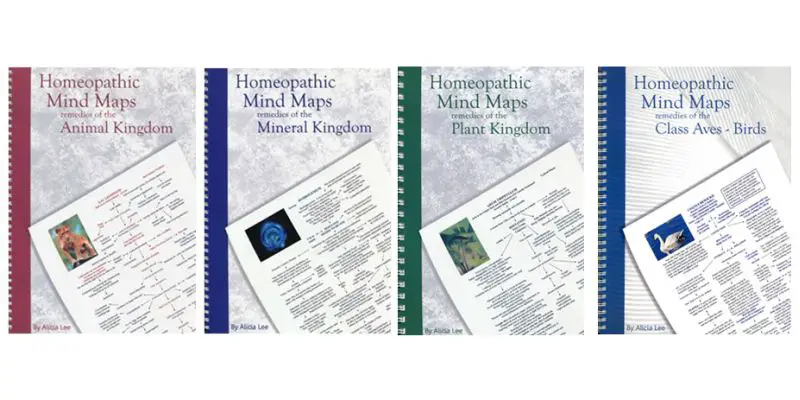
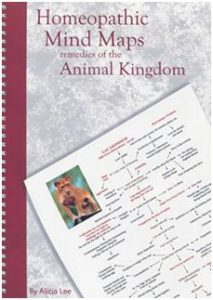
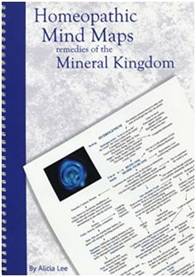

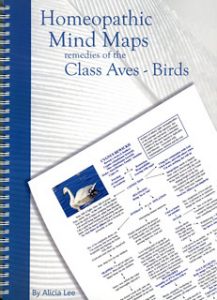
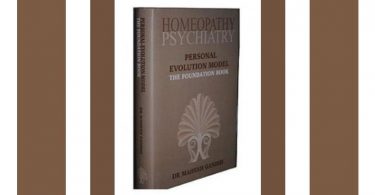
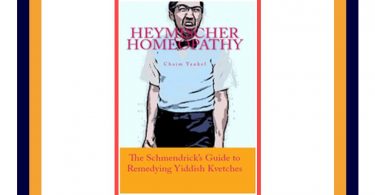

Can i get all volume list please?